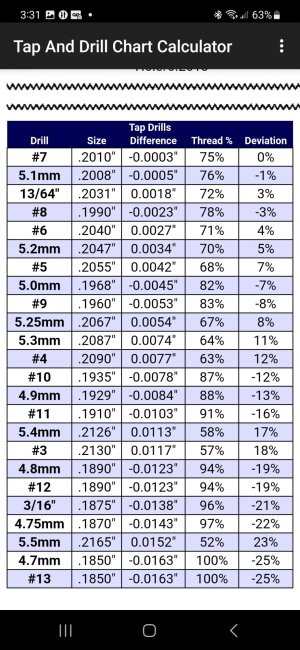Yesterday was not such a good day. I was just finishing up a small mild steel part for the Corliss engine I have been picking away at and only had two 5-40 holes to tap. They are blind holes no more than 3/16" deep. I got the starting tap down the first hole and was on my way back out when it got quit tight. Probably swarf stuck in the tap. I was working it back and forth to try and free it up when a small piece of the tap broke off in the threaded hole. I wasn't very pleased because I usually don't have much success getting pieces of broken tap out, even on larger taps than this. I had visions of having to make the part all over again, which would probably take few days at the speed I work. So made the right decision to just leave it for another day.
In the mean time I did some searching on-line and found a video from a fellow who was successful removing a small broken tap although he did quit a bit of damage to the threads. He used a very small pointed diamond coated burr in a Dremel tool.
So today I thought I would give it go because there was really nothing to loose. Luckily it was a 2 fluted tap so I was able to work back and forth across the center being very careful not to touch the treads. I managed to grind a slot down into it aways so I thought I would try a very small slotted screwdriver and see if it would catch the piece of tap. It seemed to be catching so a put a pair of pliers on the screwdriver to increase the torque I could apply. I was amazed when it started to turn and in a few turns it was out. I blew out the hole and ran a bottom tap down the clean it up. On inspection of the hole the threads appear to be undamaged. Today was a very good day.
In the mean time I did some searching on-line and found a video from a fellow who was successful removing a small broken tap although he did quit a bit of damage to the threads. He used a very small pointed diamond coated burr in a Dremel tool.
So today I thought I would give it go because there was really nothing to loose. Luckily it was a 2 fluted tap so I was able to work back and forth across the center being very careful not to touch the treads. I managed to grind a slot down into it aways so I thought I would try a very small slotted screwdriver and see if it would catch the piece of tap. It seemed to be catching so a put a pair of pliers on the screwdriver to increase the torque I could apply. I was amazed when it started to turn and in a few turns it was out. I blew out the hole and ran a bottom tap down the clean it up. On inspection of the hole the threads appear to be undamaged. Today was a very good day.


